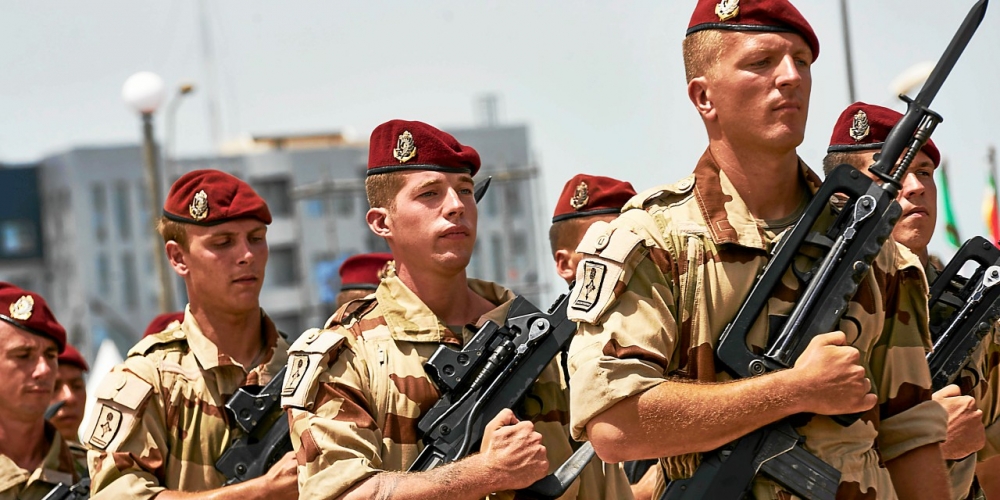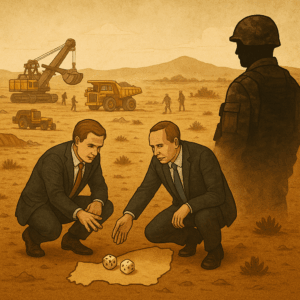In West Africa, three countries (Burkina Faso, Mali and Niger) have long been favourite investment destinations of miners, both big producers and junior exploration companies alike. Given the favourable geology (the Birimian Greenstone Belt), the region is home to many producing gold mines and numerous promising exploration projects. Niger’s uranium is the raw material France needs to generate 71 percent of its electricity.
Now there’s another risk dimension: insecurity caused by the spread of jihadism. In this part of the world, this foreign ideology recruits mostly from Tuareg, Arab and Fulani ethnic groups which have long been long been neglected by their own governments. In recent years, climate change has put their livelihood at risk, and in conflict with farmers over competition for space, water and grazing pasture. This, in turn, encourages them to take up arms against the state.
Attacks against mines in the region were unheard of as recently as ten years ago. But now threats against them are a fact of life. Consider the following disruptive events that took place in Burkina Faso and Mali:
- A supply convoy to Iamgold’s Essakane gold mine was attacked in the last few months.
- 60 miners were wounded and 37 killed while travelling to work at Endeavour Mining’s Boungou mine in 2019.
- A Canadian geologist was kidnapped and killed in 2019. ISIS claimed responsibility.
- In late 2015, Islamists seized a high-end hotel in the capital of Mali, took 170 people hostages and killed 20 of them. Al Qaeda of the Islamic Maghreb claimed responsibility.
More attacks are expected to happen as the security environment in Burkina Faso and Mali (primarily in the north and central region) continues to deteriorate. (My book, Into the Unknown, scheduled to be published in spring 2022, touches on the origins of how groups such as al-Qaeda in the Islamic Maghreb (AQIM) established a foothold in northern Mali and how certain countries from the Middle East such as Saudi Arabia exports jihad abroad.)
It is now the norm, at least in Burkina Faso and Niger. Managers no longer travel by land to get to their mines. They arrive in the capital and fly from there directly to mine sites. Mines run by Western companies are now heavily guarded. Every expat manager working in the region carries kidnap & ransom insurance in the millions of dollars range just in case.
These are stop-gap measures to keep the mines operating. What happens if Burkina Faso collapses Afghanistan-style or descends into anarchy the way Central African Republic did ten years ago? For any big miner with assets in that country, it’s a tough scenario to contemplate.
The Beginning of Regional Insecurity
In 2012, another Tuareg rebellion broke out in northern Mali, the third one since Mali became a country in 1960. The rebels, supported by trained fighters returning from Libya, allied with the jihadists who had established a foothold in parts of northern Mali. In just a matter of weeks, they rolled through an area slightly bigger than Texas, blitzkrieg-style, and humiliated the much bigger Malian army. The loss of the north, which makes up two-thirds of the country, precipitated a coup in the capital, further putting the country in disarray.
The jihadists then turned on their Tuareg allies and seized control of all key cities in this region. For a while, it looked as though the jihadists were poised to march south and seized the entire country.
(Heavily influenced by Wahabbism, Saudi Arabia’s official religion, jihadists want to overthrow democratically-elected governments, impose sharia law, and turn the clock back to the 7 th century. That means banning alcohol, music, soccer, schooling for girls and meting out medieval punishments to thieves and criminals.)
France, the country’s former colonial power, intervened militarily in January 2013. Operation Serval swiftly evicted the Islamic militants from key cities in the north, and restored Mali’s territorial integrity. But the costs to France since then are high: ongoing expenditures of about a billion euros a year.
Since then, France has little to show for except the killing by drones of a few jihadist leaders here and there. The jihadists know the lay of the land and simply melt into the population and ambush foreign and government forces when it suits them.
If anything, the insurgency got worse and metastasized like cancer into Burkina Faso. During this period in central Mali, competition for water and access to grazing land between Fulani herdsmen and Dogon farmers intensified, resulting in violence, revenge killings, causing massive insecurity and internal displacements of tens of thousands of people.
Outlook
The long-term outlook for the region is not promising. The conditions that radicalize the nomads into becoming jihadists have remained unchanged. Mali is as poor as ever with per capita income of less than $1,000. The country only has 12,000 poorly-trained troops to impose order on a huge, incomprehensibly vast country of 20 million people. Furthermore, the Malian forces are primarily composed of ethnic Bambara from the tropical south. When sent to the desert north, they are like fish out of water.
In June 2021, France announced a draw-down to its military operation in the region. What’s going to happen to these countries when French troops finally leave for good?
Of the three, Burkina Faso is most vulnerable. Attacks by jihadists are rising. About 1.5 million people are internally displaced. Three million people face severe hunger. These vulnerable people could potentially swell the ranks of the Islamists who are reportedly gaining ground against the government.
Potentially Burkina Faso could fall to the jihadists within five years. In Mali, the situation is very different. The south, where virtually all the mines are, is heavily populated and controlled by the country’s main ethnic group, the Bambara.
The current Malian government is un-elected, the result of a coup by the army last year. The Malian army has long been known to be corrupt, incompetent, and prone to commit human rights abuses. The government has been critical of the French presence and is seriously considering bringing in Russian mercenaries to fight the jihadists in the north.
If that were to happen, the country would no longer get any help from France, the U.S and neighboring countries in its fight against Islamic extremism.
Can Russian mercenaries beat the jihadists? That remains to be seen. What is certain is that the long-simmering, intractable conflict in the northern part of Mali is about to become a lot more violent and bloody.
In the worst case, Russian mercenaries prove to be no better than French forces and the government loses control of the sparsely-populated north. That by itself, doesn’t affect the security or the livelihood of the vast majority of its people who are concentrated in the south. Perhaps the foreign-owned gold mines will be safe for another ten years.
In Niger, the jihadists face a muscular response from a government heavily backed by the United States. U.S Africa Command (AFRICOM) recently completed a large drone base in Agadez in the middle of the country. From there, AFRICOM carries out numerous surveillance flights and attacks against jihadists, not only within the country, but also elsewhere in Africa. Close to 1,000 US military personnel are stationed in Niger. Some of them are involved in training Nigerien troops in counter-insurgency and desert warfare. Niger seems safe from the clutch of the jihadists for now. However, all bets are off if neighboring Burkina Faso disintegrates like Somalia.









